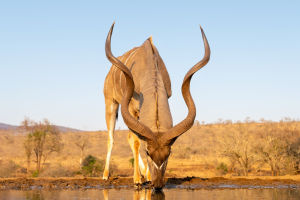Arctic Fox: Cold Beauty
When thinking of the North Pole, the first animal that comes to mind is often the polar bear. With its large, burly body, the polar bear is the largest carnivore on land and a well-known symbol of the Arctic. However, there are other animals that can be found in the Arctic, such as the arctic fox.
Despite their smaller size, arctic foxes are known for their beautiful fur. They have a body length of 50-75 cm, smaller than ordinary foxes, and a tail length of 25-30 cm. Arctic foxes can be found along the coast of the Arctic Ocean and in the tundra on some islands, often nesting in hilly areas.
Arctic foxes are able to live on ice sheets at temperatures as low as minus 50°C. They have long fur on the soles of their feet, allowing them to walk on ice without slipping. They can be found in the wild in Greenland, Norway, Finland, Denmark, Iceland, Alaska and the extreme north of Canada.
Feeding habits for arctic foxes consist of birds and their eggs. They have a habit of storing food in winter. Their diet includes lemmings, fish, birds, bird eggs, fruits, arctic rabbits, and sometimes shellfish on the coast, but their main meal is usually lemmings.
In the winter, arctic foxes have snow-white fur, while in the summer, their fur's color is almost the same as permafrost. In Iceland and Greenland, there are even blue arctic fox variants. In the winter, arctic fox fur keeps them warmer than even polar bear fur.
Arctic foxes have been found to travel an average of 90 kilometers a day, for days on end. They can migrate from the Pacific coast to the Atlantic coast in just a few months.
Researchers have found that arctic foxes can navigate hundreds of kilometers. They leave their nests in the winter, migrate up to 600 kilometers away, and return home the following summer.
The breeding season for arctic foxes typically occurs between March and May. During this season, males will mate with multiple females and guard them while they nest. Females usually build their nests on hills or rocks, usually with 2 to 12 young.
After birth, the cubs remain in the den for the first few weeks until they are able to follow their mother in hunting. The average lifespan of an Arctic fox is 3 to 4 years.
In Ulster-Scots legends, arctic foxes are described as mystical creatures who are believed to be demigods possessing magical and supernatural powers.
In Inuit culture, the arctic fox is a very important animal, considered a symbol of intelligence, speed, and resilience. As a result, arctic foxes are often the subject of patterns and carvings in local arts and crafts.
Unfortunately, due to human activities such as climate change, the habitat and survival of arctic foxes are being threatened. A warming climate has reduced ice cover, which has also affected food sources and migration paths for arctic foxes.
Pollution and hunting caused by human activities have also had an impact on arctic fox populations. To protect these precious animal resources, effective measures such as reducing carbon emissions and prohibiting illegal hunting are necessary.


